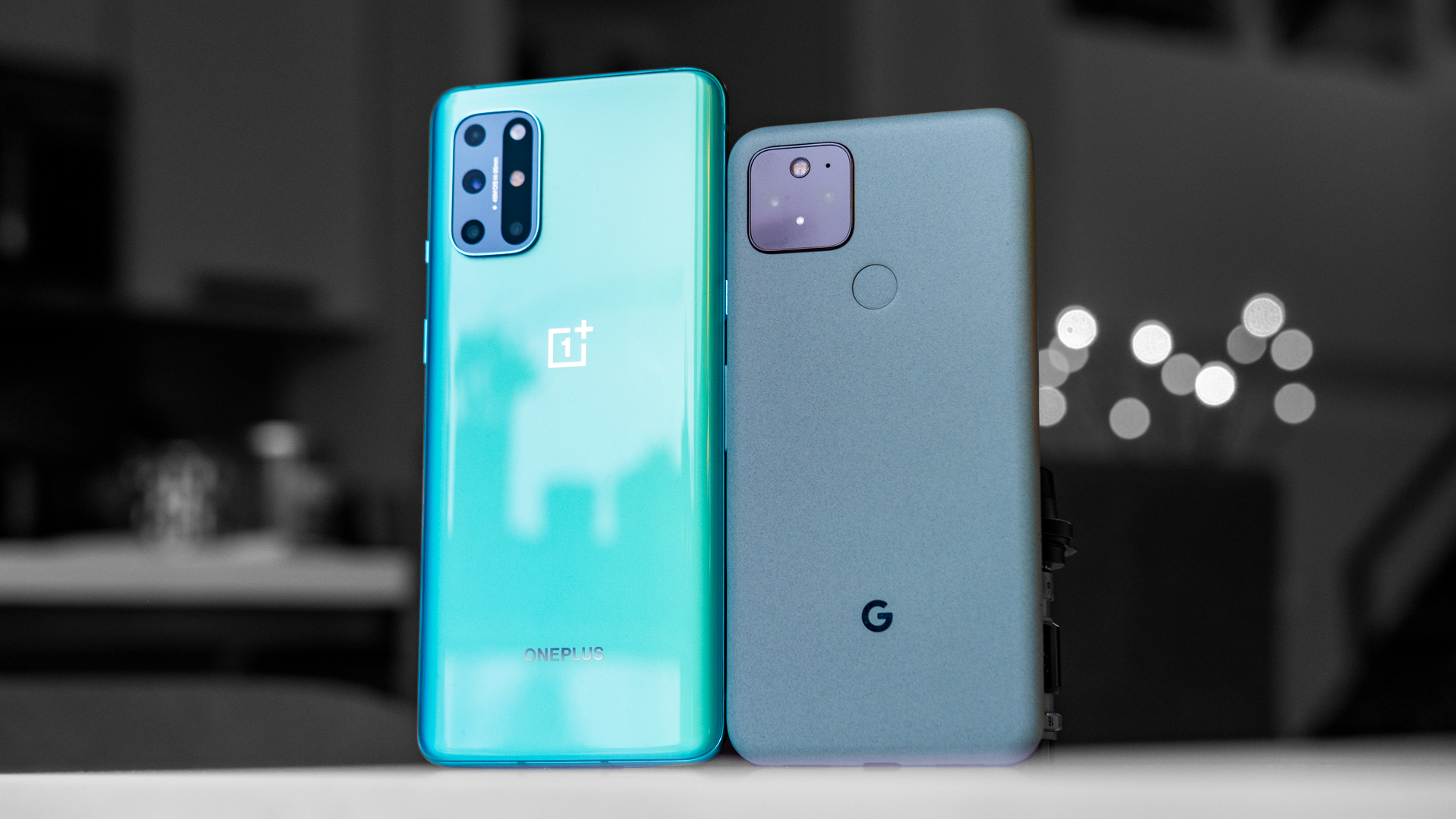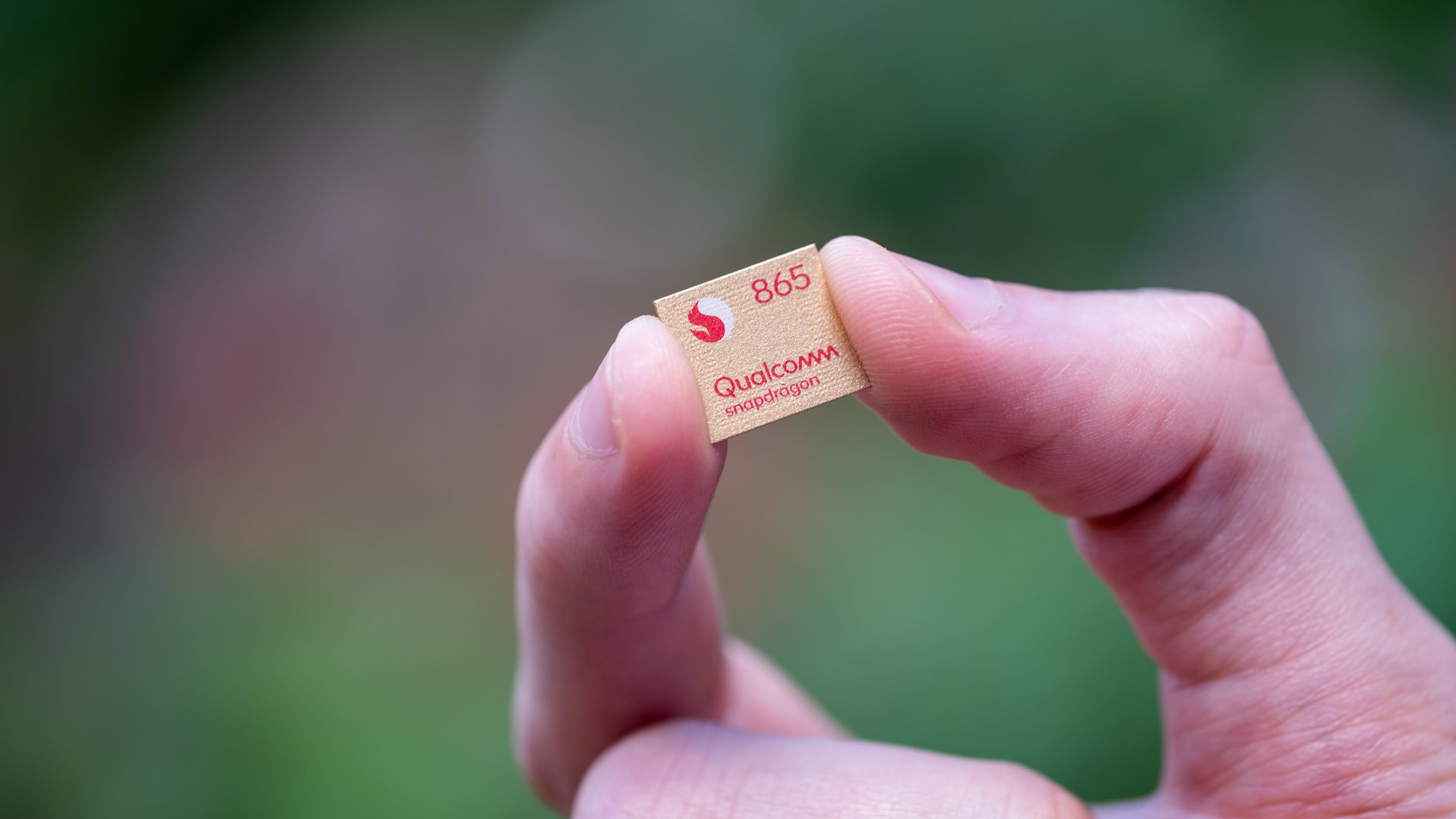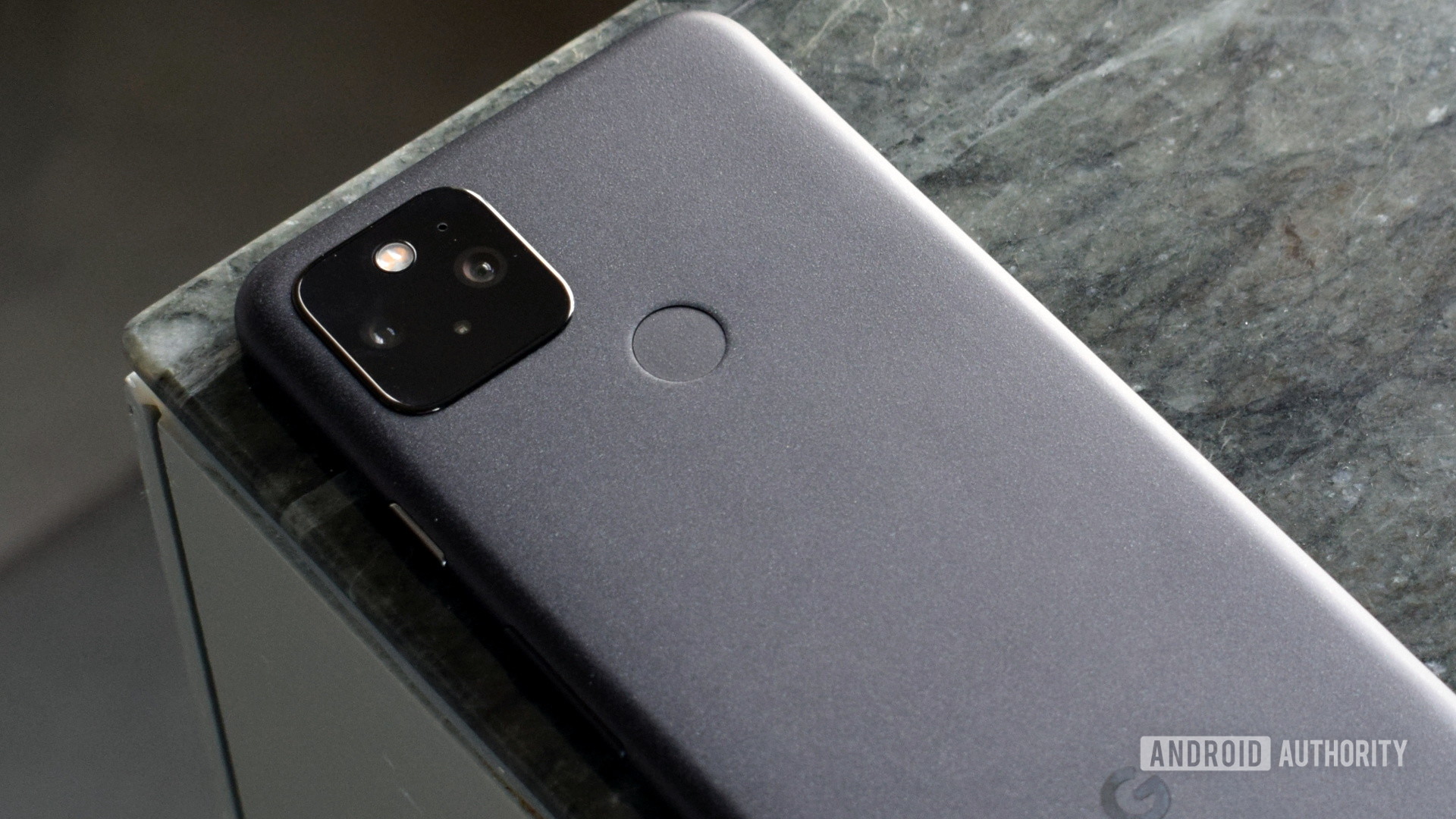Affiliate links on Android Authority may earn us a commission. Learn more.
OnePlus 8T vs Google Pixel 5: Which affordable 5G phone should you buy?
Published onMarch 29, 2021

2020 offered bargain hunters plenty of affordable smartphones to pick from. Two of the latest and most significant were the OnePlus 8T and the Google Pixel 5. Both offer solid hardware packages, complete with cutting edge 5G networking and friendlier price tags than many other flagship smartphones. But which one should you buy?
With official specifications and prices now out in the open and our verdicts in, here’s a thorough run-through of the OnePlus 8T vs Google Pixel 5.
Our verdicts: OnePlus 8T review | Google Pixel 5 review
OnePlus 8T vs Google Pixel 5
Specs
| OnePlus 8T | Google Pixel 5 | |
|---|---|---|
Display | OnePlus 8T 6.55-inch AMOLED 2,400 x 1,080 resolution 402ppi 120Hz refresh rate 20:9 aspect ratio | Google Pixel 5 6-inch OLED 2,340 x 1,080 resolution 432ppi 90Hz refresh rate 19.5:9 aspect ratio >1,000,000:1 contrast ratio |
Processor | OnePlus 8T Qualcomm Snapdragon 865 4x Cortex-A77 4x Cortex-A55 | Google Pixel 5 Qualcomm Snapdragon 765G 2x Cortex-A76 6x Cortex-A55 Titan M Security Module |
GPU | OnePlus 8T Adreno 650 | Google Pixel 5 Adreno 620 |
RAM | OnePlus 8T 8GB / 12GB LDPPR4x | Google Pixel 5 8GB LPDDR4x |
Storage | OnePlus 8T 128GB / 256GB No microSD slot | Google Pixel 5 128GB No microSD slot |
Cameras | OnePlus 8T Rear Main: 48MP, f/1.7 aperture, 0.8µm pixels, optical + electronic image stabilization Secondary: 16MP, f/2.2 aperture, ultra-wide (123-degree FoV) Macro: 5MP, 3cm focal length Monochrome: 2MP 4K at 60fps/30fps Front 16MP sensor, f/2.4 aperture, 1.0 μm pixels, fixed focus, electronic image stabilization | Google Pixel 5 Rear Main: 12.2MP, f/1.7 aperture, 1.4µm pixels, optical + electronic image stabilization Secondary: 16MP, f/2.2 aperture, 1 micron pixel, ultra-wide (107-degree FoV) 4K at 60fps/30fps Front 8MP sensor, f/2.0 aperture, 1.12µm pixels, fixed focus, 83-degree FoV |
Headphone jack | OnePlus 8T No | Google Pixel 5 No |
Battery | OnePlus 8T 4,500mAh 65W charging | Google Pixel 5 4,080mAh 18W charging 12W wireless charging Reverse wireless charging |
IP rating | OnePlus 8T None for unlocked model IP68 rating for T-Mobile version | Google Pixel 5 IP68 |
Sensors | OnePlus 8T In-display Fingerprint Sensor Accelerometer Electronic Compass Gyroscope Ambient Light Sensor Proximity Sensor Sensor Core, Flicker-detect Sensor Barometer Sensor (North America exclusive) | Google Pixel 5 Proximity / ambient light sensor Accelerometer Gyrometer Magnetometer Pixel Imprint fingerprint sensor Barometer Spectral and flicker sensor |
Software | OnePlus 8T Android 11 | Google Pixel 5 Android 11 |
Dimensions and weight | OnePlus 8T 160.7 x 74.1 x 8.4mm 188g | Google Pixel 5 144.7 x 70.4 x 8mm 151g |
Colors | OnePlus 8T Aquamarine Green, Lunar Silver | Google Pixel 5 Just Black, Sorta Sage |
Features
The OnePlus 8T and Pixel 5 offer excellent displays, although the OnePlus 8T offers more screen real-estate, at 6.55- versus 6-inches. Pixel density is virtually identical between the two, but the 8T does offer a 120Hz refresh rate versus the still fast 90Hz refresh rate of the Pixel 5. This larger screen results in a bulkier handset, though. The OnePlus 8T weighs 188g vs. the Pixel 5’s 151g.
Where the OnePlus 8T really pulls ahead is in the performance department. The flagship tier Snapdragon 865 outperforms the Pixel 5’s Snapdragon 765G, especially when it comes to gaming and AI workloads. However, the 765G is no slouch for the vast majority of day-to-day workloads. The chip should help out the Pixel 5’s battery life too.
Read more: Snapdragon 765G vs. Snapdragon 865: How does the Pixel 5 stack up?
You shouldn’t notice a performance difference for most apps, but the OnePlus 8T is definitely the better option for those who need gaming or more extreme performance.
OnePlus also nudges ahead on storage. Both phones come with 128GB flash and 8GB LPDDR4x RAM as a minimum. However, the OnePlus 8T offers a larger 256GB storage option and 12GB of RAM if you’re prepared to spend a little more.

What the Pixel 5 lacks in brute performance, it makes up for in features. Google includes wireless charging, an IP68 rating, and the Google Titan M security chip you won’t find in OnePlus’s latest offering. However, OnePlus is debuting its blazingly fast 65W wired charging solution with the 8T. Both offer 5G networking support, but there’s a mmWave option for Pixel 5 customers in the US. The Pixel 5 comes out ahead on high-end extras.
The two handsets take different approaches to photography too. Google’s primary camera is a familiar 12.2MP sensor, paired up with a new 16MP wide-angle lens, and an 8MP selfie camera. Google offers some of the best-in-class photography software and post-processing, including Night Sight portraits, Super Res Zoom, and improved HDR+ capabilities. The Pixel 5 is a tough handset to best when it comes to photography.
OnePlus’ 8T offers a higher resolution 48MP primary sensor, paired up with a 16MP wide-angle lens that provides a wider field of view than Google’s equivalent. OnePlus also has included low-resolution macro and monochrome cameras for some more stylish photos. Although, previous iterations have felt more like gimmicks with undercooked image quality. The 8T has the more flexible camera package out of the two, but Google’s software continues to lead the industry. We’ll reserve final judgment on image quality until we conduct a camera shootout.

Both phones have big batteries to handle all this hardware. The OnePlus 8T packs a 4,500mAh cell, while the Pixel 5 offers a slightly smaller 4,080mAh battery. Both should last a full day in most scenarios. However, OnePlus offers a faster charging solution to get you back on your feet. The Pixel 5, on the other hand, supports convenient wireless charging and reverse wireless charging to power up your Pixel Buds and other accessories without a cable.
Google and OnePlus both include Android 11 with their latest handsets. Heavy-handed UI changes are a little more controversial with Oxygen OS 11, but both are feature-rich OS variants that won’t let you down. Google also promises Android updates until October 2023 for the Pixel 5.
Price
The Google Pixel 5 is on sale in global markets through the Google Store, Google Fi, and various other retailers. The handset has a slightly higher price tag in the US than the rest of the world, owing to mmWave 5G support which is exclusive to the country.
- Google Pixel 5 with 8GB RAM, 128GB storage from $699/£599/€629.
The OnePlus 8T prices fall into roughly the same ballpark. However, the larger memory variant will set you back a little more in exchange for 12GB RAM and double the storage. Those with more extensive media libraries may want to pay the extra $50 for a little more space. Unlike some of this year’s earlier releases from OnePlus, the OnePlus 8T is set to appear in global markets, including the US, India, and the UK. The phone is far more competitively priced in the latter regions where an 8GB/128GB variant is available for far less cash.
- OnePlus 8T with 12GB RAM, 256GB storage from $749/£549/Rs. 42,999
Overall, both handsets offer pretty great value for the money.
OnePlus 8T vs. Google Pixel 5: Which should you buy?
Picking a device based on the spec sheets is particularly difficult with the OnePlus 8T vs. Google Pixel 5. They’re both very appealing handsets with their pros and cons. However, there is a clear divide between the two that might help you make up your mind.
If you desire the very best performance possible, the OnePlus 8T and its high-end Snapdragon 865 processing package are the way to go. Qualcomm’s Snapdragon 765G SoC in the Pixel 5 and inside the cheaper OnePlus Nord has proved plenty fast so far. But the Snapdragon 865 is in a different league. Combined with a 120Hz display, the OnePlus 8T will feel the snappier of the two phones, especially while gaming.
Which handset do you prefer?
Alternatively, customers looking for extra premium features will likely find what they’re after with the Google Pixel 5. An IP68 water and dust resistance rating, wireless charging, and mmWave 5G support in the US are features we’re used to seeing in flagships much closer to the $1,000 mark. By sacrificing small amounts of processing power, Google can offer those little extra bells and whistles that OnePlus can’t.
Choosing between these two handsets boils down to your preference for the features mentioned above. The two phones take very different approaches to provide excellent value around the $700 mark. Who do you think strikes the best balance of hardware and price?